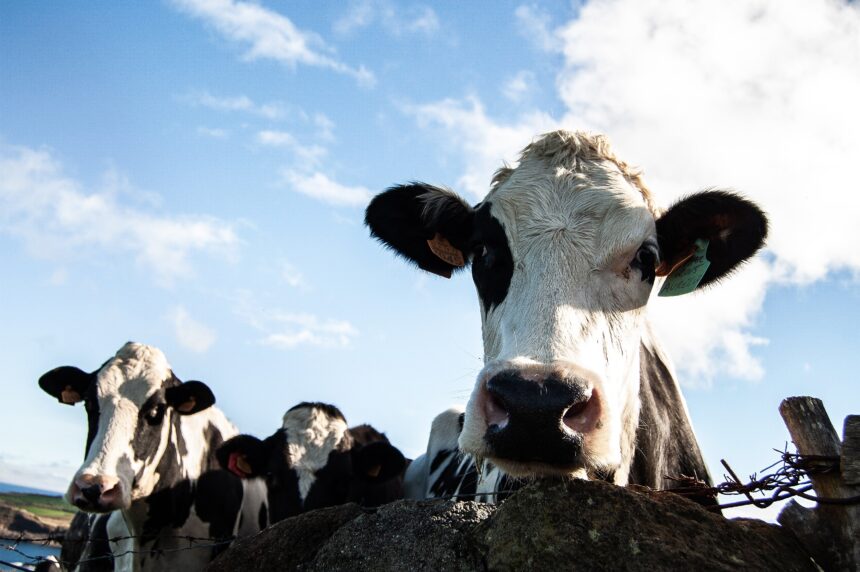The Heartland is getting a second wind — and it’s sprouting from the soil. Regenerative Agriculture is turning drought-baked fields and hollowed-out main streets into resilient food sheds and lively local economies.
What Regenerative Agriculture Really Means (No Jargon, Just Soil)
Strip away the buzzwords and you’ve got a simple, powerful idea: heal the soil, and the community heals with it. Regenerative Agriculture focuses on practices that build living soil, encourage biodiversity, and keep water where it falls. That looks like cover crops, reduced tillage, diverse rotations, managed grazing, and compost — not as trendy tricks, but as a system.
If you want a foundational reference that’s practical, science-backed, and farmer-friendly, dive into this USDA explainer on soil health. The big takeaway: soil is an ecosystem. When you disturb it less and feed it more, it returns the favor with structure, fertility, and resilience.
A TikTok user: “Cover crops made the fields look like spring even in November — soil stayed spongy, yields steady.”
Why Midwestern Towns Are Betting on Regeneration
The Midwest has seen the playbook of consolidation: bigger machines, fewer farmers, fragile margins. Regenerative Agriculture flips that script by trading extraction for regeneration, and the effects ripple far beyond the fence line.
From Erosion to Abundance: The Soil-First Payoff
On-farm, the wins show up in fewer washed-out gullies, more consistent yields during weather swings, and lower input bills. Off-farm, creeks run clearer and towns stop holding their breath every time the radar turns red. For an economics walkthrough that includes both dollars and ecosystem services, check the USDA’s economics of regenerative agriculture. It connects the dots between healthier soil, more stable outputs, and real balance-sheet impacts.
Field-level shifts you actually feel:
- Less compaction, more structure: Roots and fungi rebuild soil “tilth,” so tractors sink less and seeds find a comfy bed.
- Water holding that matters: During a dry spell, fields with living roots and residue stay cooler and retain moisture longer.
- Input efficiency: With better biology, you nudge fertilizer and herbicide down over time — not overnight, but measurably.
Follow the Money: Who’s Buying and Why It Matters
A quiet market signal is getting louder: buyers want food grown with a lighter footprint. Some national brands are piloting premiums and long-term contracts for regenerative supply. For a culture-meets-commerce snapshot, this BigTrending piece on climate-positive fast food chains shows how mainstream players are shifting their sourcing stories. When the market starts rewarding soil outcomes, local producers, co-ops, and millers have leverage — and towns feel the upside.
An X user: “Switching to no-till cut my diesel bill and the creek runs clear after storms. Never going back.”
Case Files from the Heartland (Proof It Works)
You don’t have to squint to see evidence. Across the Midwest, “carbon-smart” rotations and managed grazing are anchoring new narratives: fewer catastrophic washouts, steadier yields, and local businesses that don’t shutter every time commodity prices whiplash.
Carbon Farming in Practice
Regenerative Agriculture and carbon farming aren’t synonyms, but they overlap: living roots, perennials, and diverse rotations pull carbon into soil, building structure and fertility. If you want a readable overview that ties biology to economics, Wired’s carbon farming overview lays out how practices turn into measurable outcomes — and why buyers are starting to care.
Towns on the Comeback Trail
The comeback isn’t just in the fields. When farms diversify, towns do too. Weekend farm tours lead to breakfast rushes, artisan grain bakeries fill up on Saturdays, and B&Bs see shoulder-season bookings. For a broader angle on rural revival trends and the new back-to-the-land energy, BigTrending’s look at the great rewilding and off-grid shift frames how local nature and local food move people (and money) around the map.
A Redditor: “Our town café started sourcing from a regen co-op; tourists literally come for the Saturday farm tour now.”
Roadblocks — And How Midwest Communities Clear Them
Let’s be real: transition takes nerve and know-how. The barriers are consistent — capital, knowledge, and market access — but so are the fixes when towns coordinate.
Startup Costs, Training Gaps, and Market Access
- Capital: Cover crop seed, fencing for managed grazing, and equipment tweaks add up. That’s where local banks, green grants, and county-level revolving funds earn their keep.
- Know-how: Agronomists, extension agents, and seasoned peer mentors shorten the learning curve. Field days beat PowerPoints.
- Markets: Aggregation (grain cleaning, cold storage, small-scale milling) turns scattered producers into a brand that buyers can rely on.
For a policy-level snapshot of how the U.S. defines, funds, and measures this space, a good primer is the CRS overview of regenerative agriculture. It helps local leaders align projects with programs, rather than chasing one-off grants.
Play it as a team sport: Town councils, farm bureaus, and chambers of commerce should co-sponsor a one-year pilot with clear targets: soil tests, runoff metrics, and market commitments from local restaurants or co-ops.
Toolkit: A 12-Month Transition Plan for Your County
If your town wants traction, here’s a practical timeline you can take to a meeting.
Q1: Diagnose and Design
- Baseline tests: Soil organic matter, infiltration rates, compaction layers.
- Landscape mapping: Identify flood-prone fields, windy ridges, and wildlife corridors for hedgerows/pollinator strips.
- Choose the first 2–3 practices: Often cover crops + reduced till + a trial of managed grazing on marginal acres.
Q2: Field Trials and Co-op Buying
- Bulk seed and gear: Pool orders for cereal rye, multi-species mixes, and fencing supplies to cut unit costs.
- Peer pods: Group 5–10 farmers with similar rotations to swap notes weekly through planting and emergence.
- Data discipline: Document inputs, passes, fuel burn, field time. Small wins compound.
Q3: Story + Market
- Local buyers: Line up a grocer, café, school, or brewery to source a regenerative SKU for harvest season.
- Agritourism 101: Map a weekend route: two farms, a mill or creamery, and a downtown tasting stop.
- Grant alignment: Use that CRS primer to match your pilot with state/federal programs that extend it beyond year one.
Q4: Measure and Bank the Gains
- Soil retest: Compare infiltration and organic matter, then publish the results.
- Cost curve review: Track input reductions and labor changes; refine next year’s plan.
- Institutionalize: Form a “Regen Council” with a budget line, annual field days, and a shared equipment pool.
How Regenerative Agriculture Shows Up on Main Street
Jobs: Seed dealers, soil labs, fencing crews, agritourism guides, and specialty processors.
Small-business growth: Bakeries using local heritage grains, taprooms pouring terroir-forward lagers, farm-to-table pop-ups that actually mean it.
Civic pride: Creek cleanups that stay clean, school gardens tied to soil lessons, and a Saturday farmers’ market that becomes a social anchor.
Mini case study: A three-farm cluster near a county seat shifts to no-till with rye covers and seasonal grazing. They share a drill, buy fencing together, and sell a “Heartland Loaf” to two cafés. After one season, diesel use drops 18%, storm runoff shrinks (measured with DIY flumes), and the café Saturdays need an extra baker. Small numbers, big vibes.
Tech and Innovation: Tools that Make Regeneration Scalable
Drones spot nitrogen-starved patches for targeted side-dressing. Soil sensors watch moisture and temperature to time operations. Data platforms track practices and outcomes so farmers can show buyers and lenders what changed. None of this replaces the agronomy; it just de-risks the leap and proves, with graphs and numbers, that regenerative practices are working.
Pro tip: Don’t chase gadgets first. Start with a management change (e.g., reduce tillage, add covers), then layer tech that measures and amplifies that change.
Culture Shift: From Yield-Only to Yield-Plus
Regenerative Agriculture doesn’t reject yield; it reframes it as yield-plus — yield plus water retention, plus biodiversity, plus community dollars sticking around. In that frame, the “best” field isn’t the one with the most corn this season; it’s the one that can handle a surprise 2-inch rain in May and a stingy August without shrugging.
Local language matters: When farmers tell farmers, “the creek ran clear after the last gully washer,” that’s more persuasive than any white paper.
FAQ: Regenerative Agriculture, Straight Answers
Q1: What is Regenerative Agriculture in practice?
It’s a system of farming that builds living soil and biodiversity using tools like cover crops, reduced tillage, rotations, and managed grazing — with benefits you can measure in infiltration, organic matter, and resilience.
Q2: How does Regenerative Agriculture help the environment?
It boosts soil structure, increases water retention, cuts erosion, and supports wildlife — outcomes tied directly to better soil health and more stable local ecosystems.
Q3: Why is Regenerative Agriculture crucial for Midwestern towns?
It stabilizes yields, reduces input vulnerability, creates local processing and tourism opportunities, and keeps more money circulating downtown — exactly what small towns need to rebound.
Q4: What are the biggest hurdles to Regenerative Agriculture?
Startup costs, training gaps, and market access. Communities overcome them with co-op purchasing, peer mentoring, and aligned programs outlined in the CRS overview of regenerative agriculture.
Q5: How long before Regenerative Agriculture “pays”?
You’ll often see improvements in infiltration and fuel use within the first season; profitability grows as inputs fall and markets reward verifiable practices — the economics of regenerative agriculture are strongest when farmers track data.








